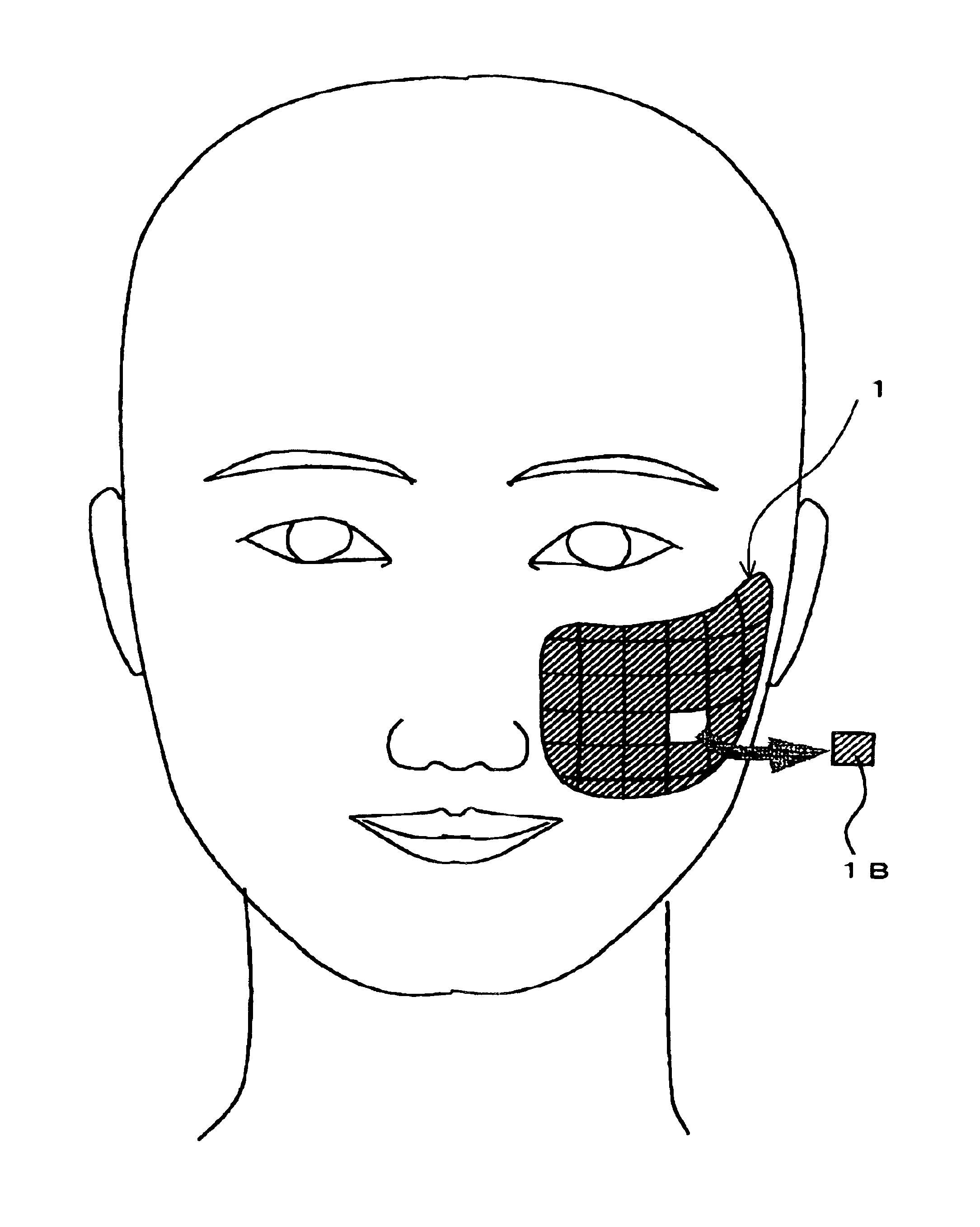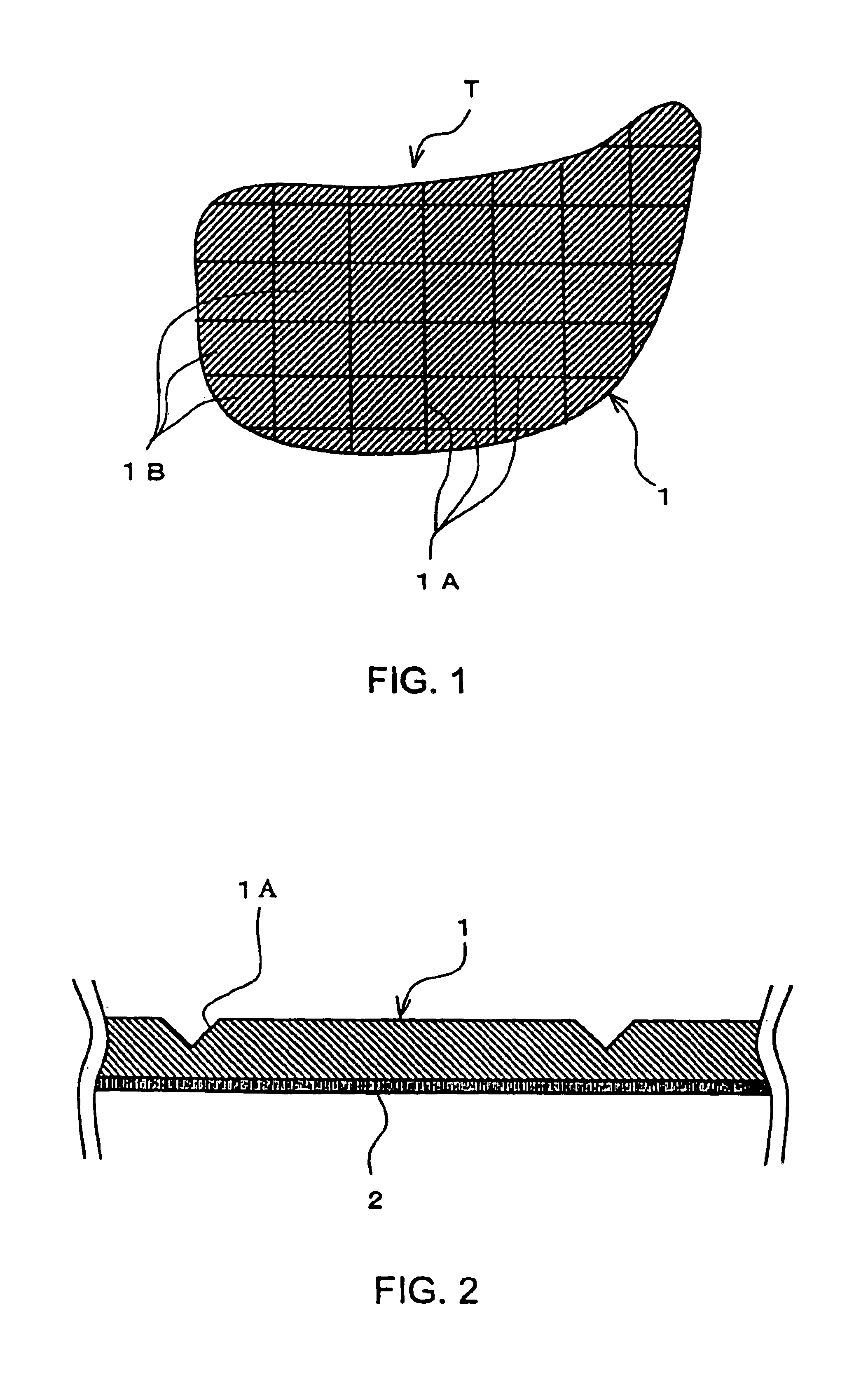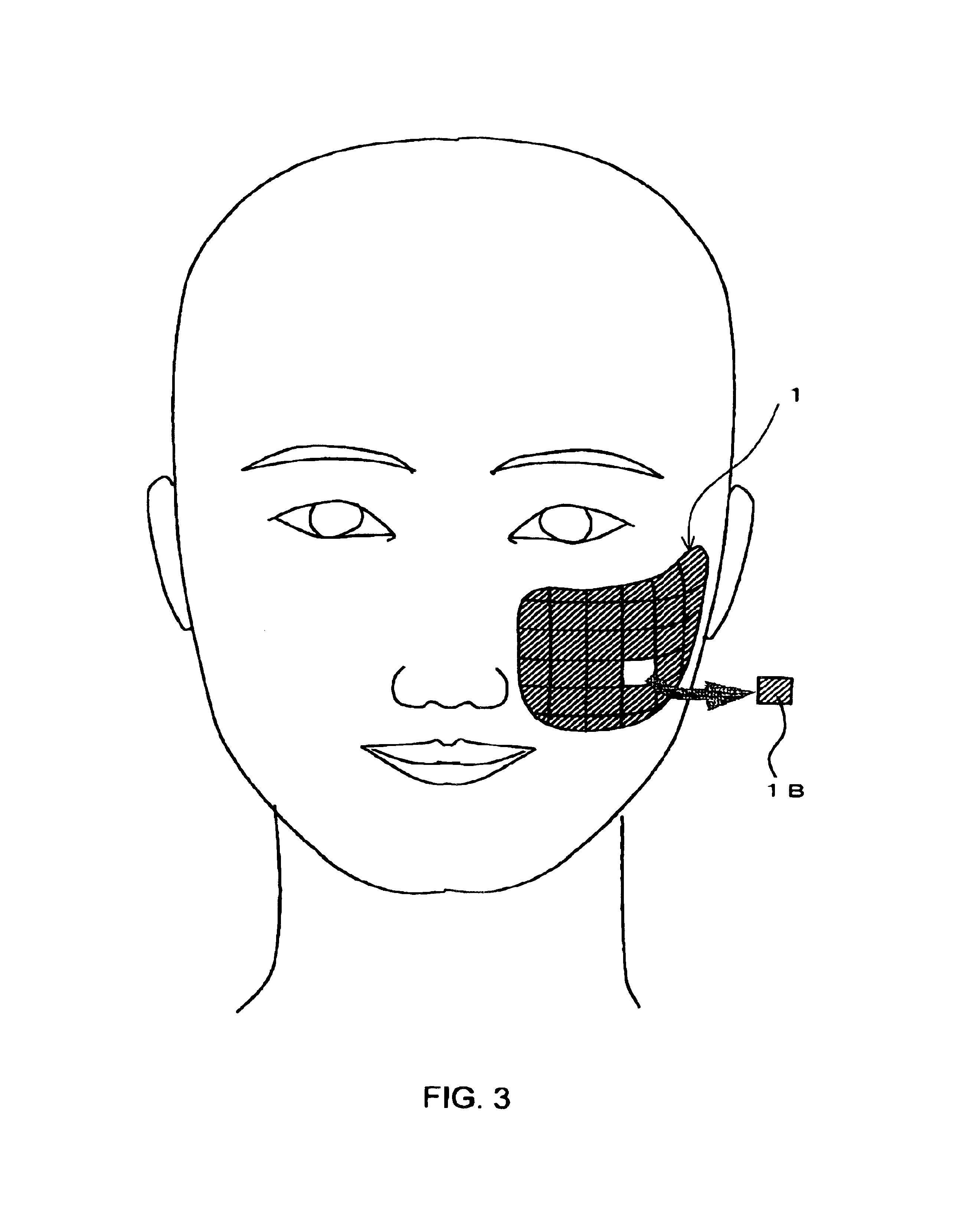Bandage pad for chemical peels
a bandage pad and peeling technology, applied in the field of chemical peels, can solve the problems of direct application of chemical peeling agent to the skin of a wearer, uneven application of chemical peeling agent, and undesired skin effects, and achieve the effect of protecting from excessive chemical peeling
- Summary
- Abstract
- Description
- Claims
- Application Information
AI Technical Summary
Benefits of technology
Problems solved by technology
Method used
Image
Examples
Embodiment Construction
[0028]Referring to the drawings, a preferred embodiment of a bandage pad for chemical peels according to the present invention is described.
[0029]FIG. 1 is a plane view showing an appearance of a bandage pad for chemical peels T according to this embodiment. FIG. 2 shows a cross-section of the bandage pad. The bandage pad for chemical peels T in this embodiment comprises a film backing 1 and a chemical peeling agent 2. The film backing 1 is made of silicone so that the film backing 1 is see-through to a certain extent. The chemical peeling agent 2 is spread over a given area, such as the entire surface, of one side of the film backing 1.
[0030]A combination of the film backing 1 and the chemical peeling agent 2 may be formed in the form of a bandage patch, pack or strip depending on the site to which the chemical peel is applied. Further, the chemical peeling agent 2 is not required to be on the film backing 1 at the time of manufacture or delivery. A wearer may spread the chemical p...
PUM
 Login to View More
Login to View More Abstract
Description
Claims
Application Information
 Login to View More
Login to View More - R&D
- Intellectual Property
- Life Sciences
- Materials
- Tech Scout
- Unparalleled Data Quality
- Higher Quality Content
- 60% Fewer Hallucinations
Browse by: Latest US Patents, China's latest patents, Technical Efficacy Thesaurus, Application Domain, Technology Topic, Popular Technical Reports.
© 2025 PatSnap. All rights reserved.Legal|Privacy policy|Modern Slavery Act Transparency Statement|Sitemap|About US| Contact US: help@patsnap.com



